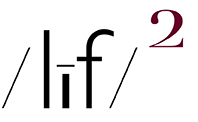(embiggenable)
(embiggenable)
(embiggenable)
(embiggenable)
(embiggenable)
“If you have a magic camera that can take a sharp, clear, well-exposed, well-focused, and color-correct picture of most anything, what are you going to photograph? And, at a deeper level, how are you going to express yourself using photography in a way that is individualized or idiosyncratic to you specifically…?…that personal expressiveness and a stylistic identity…” ~ Mike Johnston
FOR THE BETTER PART OF A WEEK I HAVE been struggling with the subject of this entry, i.e., creativity and the imagination in the making of photographs. Specifically so, in the cause of making fine art photographs. I wrestle with the concept of creativity / imagination, re: fine art photography, cuz, to be honest, I do not think it plays a part in the making of such photographs…
…Huh? Say what?
Isn’t creativity/ imagination the answer to Mike Johnston’s question, “…how are you going to express yourself using photography in a way that is individualized or idiosyncratic to you specifically…?…that personal expressiveness and a stylistic identity…” that sets one apart from the maddening crowd.
iMo, the answer to that question is quite simply, “No, it-creativity / imagination-is not the answer.”
To clarify my opinion, let me emphasize the fact that I am addressing the making of fine art photographs as opposed to the making of decorative photographs. That’s cuz, in the referent-centric, decorative photography arena, the repertoire of creativity / imagination most often, if not always, consists of the application of art sauce, aka: flashy technique, “unique” picture making POV (body position), special gear (lenses and the like), and the selection of traditional, spectacular / dramatic-so called “picture-worthy”-referents.
Whereas, in the idiocentric, fine art picture making world, the only application of what might be labeled as creativity / imagination is the use of the picture maker’s innate-not something you can buy at B&H Photo-“individualized or idiosyncratic” vision in the making of his/her photographs; the vision which directs-one might even write, “demands”-what and how a picture maker photographs. More often than not, he/she considers the referent and its visual essence as inseparable with no need to tart it up with any art sauce.
While there are many differences, re: fine art v. decorative photography, one primary difference is that decorative picture makers tend to employ creativity / imagination in the cause of making pictures that scream. “Look at me and let there be no doubt about what my pictures are about.”
Whereas, fine art picture makers have more respect for the viewer inasmuch as they see no need for cheap tricks in order to garner and hold a viewer’s attention and interest. And, in the brave and simple act of presenting to a viewer the unvarnished true-to-the-actuality-of-the-real-world that which has pricked his/her eye and sensibilities, he/she lets the viewer discern what their pictures are about.
“I think about photographs as being full, or empty. You picture something in a frame and it's got lots of accounting going on in it--stones and buildings and trees and air--but that's not what fills up a frame. You fill up the frame with feelings, energy, discovery, and risk, and leave room enough for someone else to get in there.” ~ Joel Meyerowitz
Moral of the story: if you need to think about your picture making, spend more time thinking and getting in touch with (aka: feeling) discovering, understanding, and nurturing your vison than you do about being more “creative”.
